WWII 1944 Allied Operation Overlord Invasion of France Fathom Navy Map (Double-Sided)*

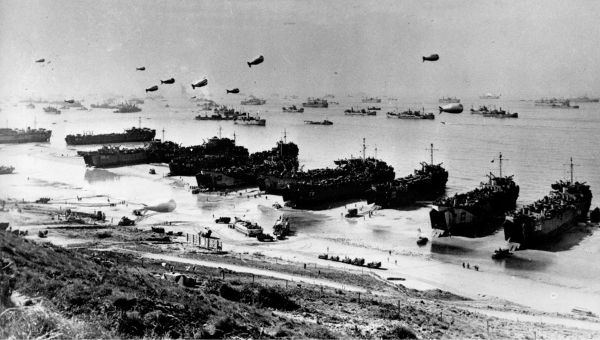

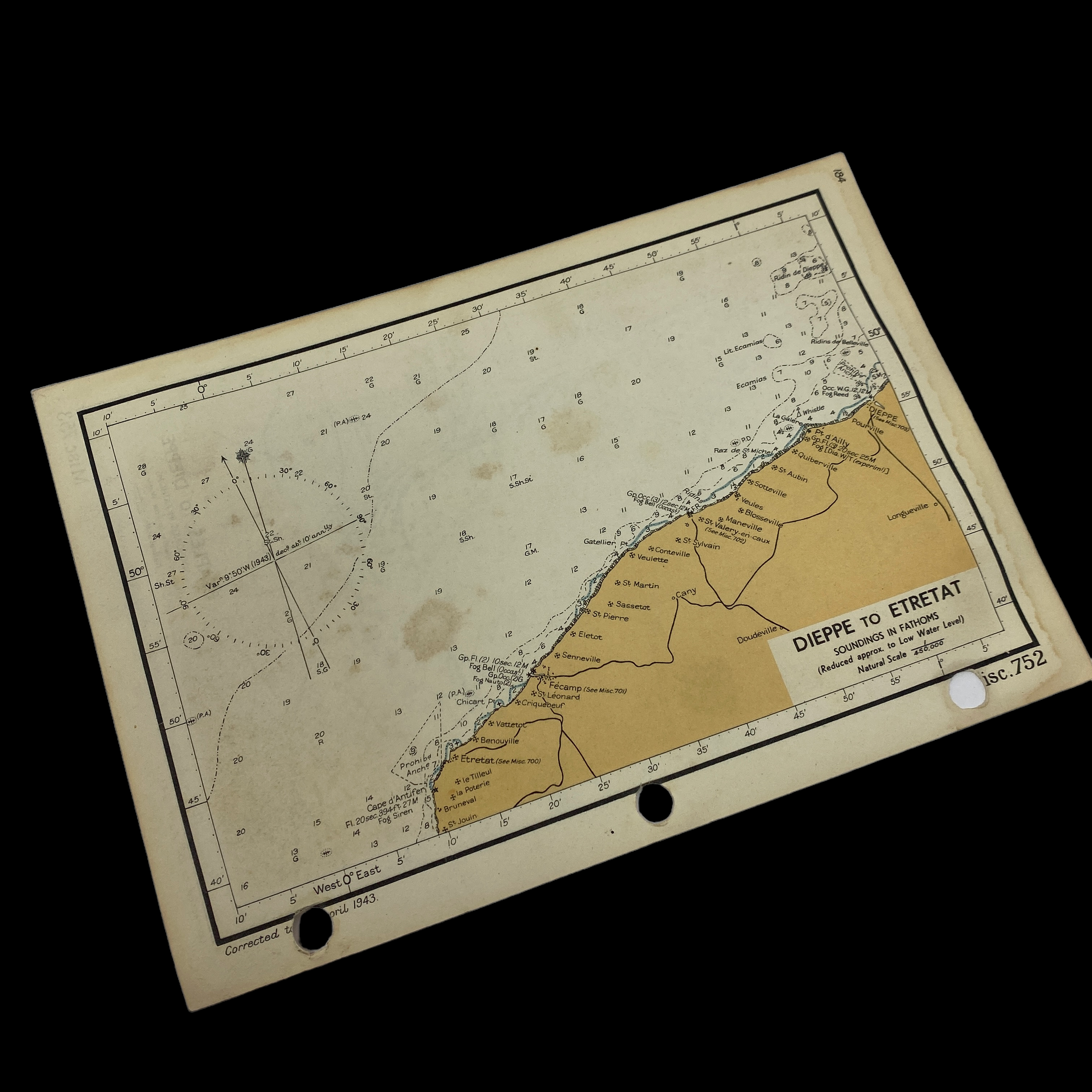


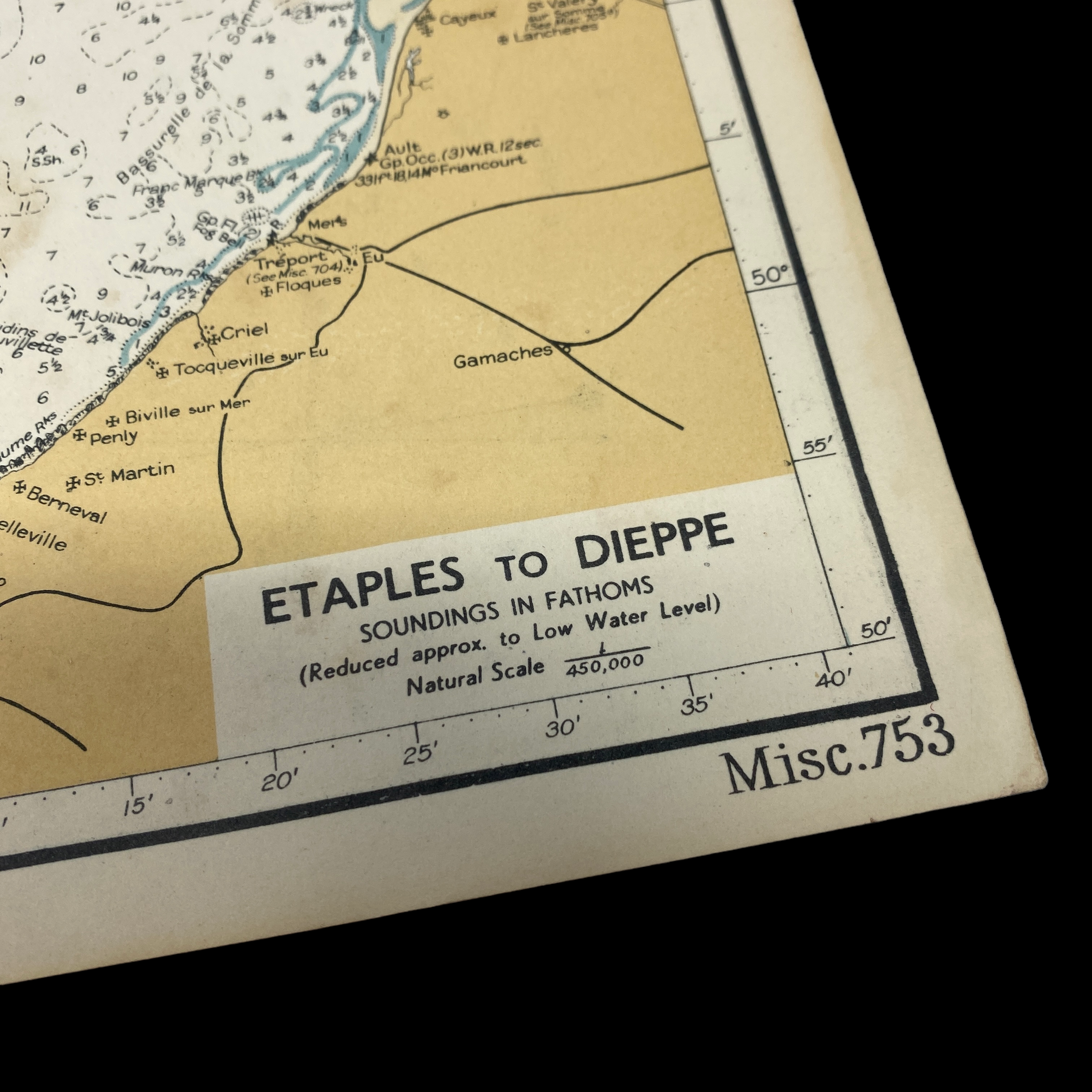
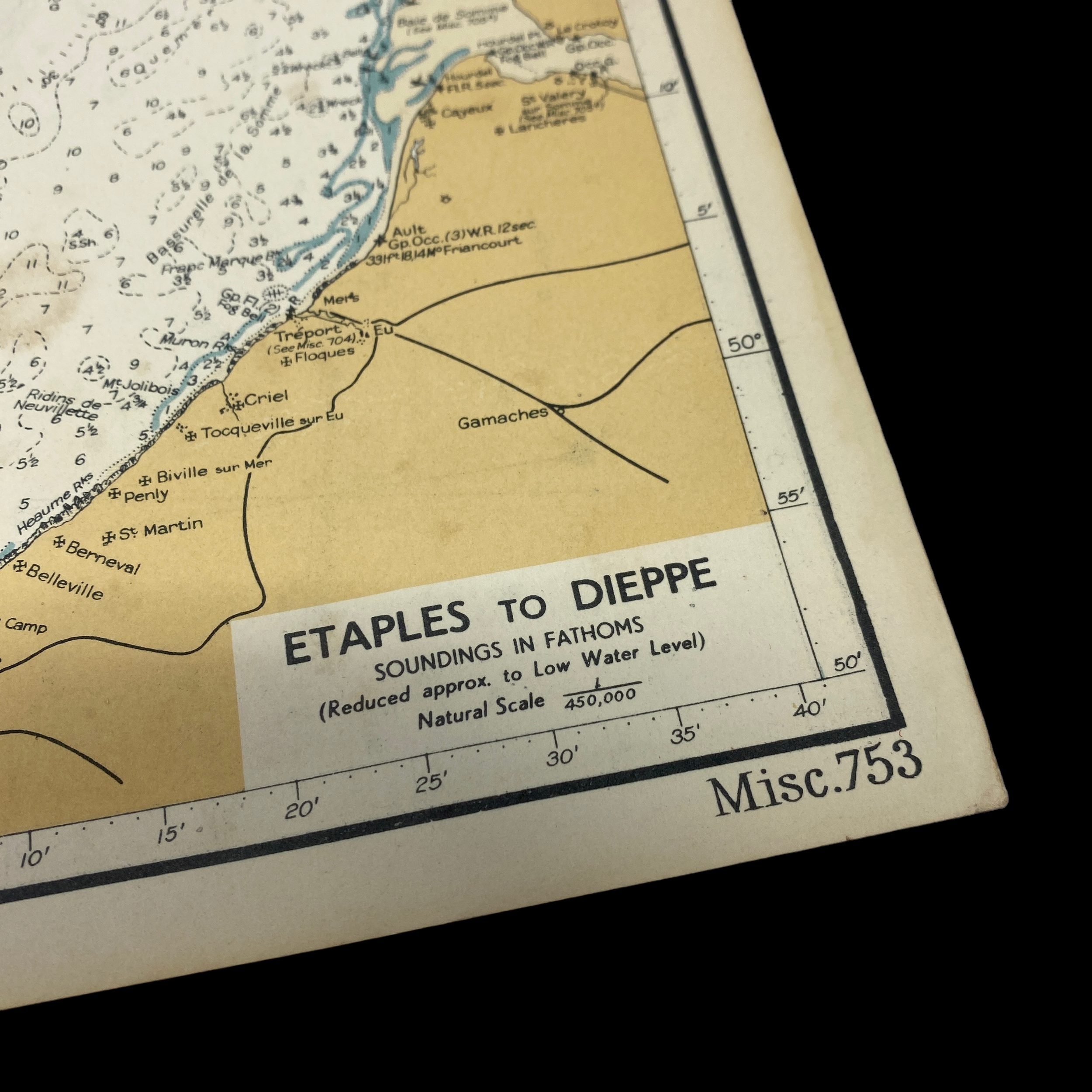
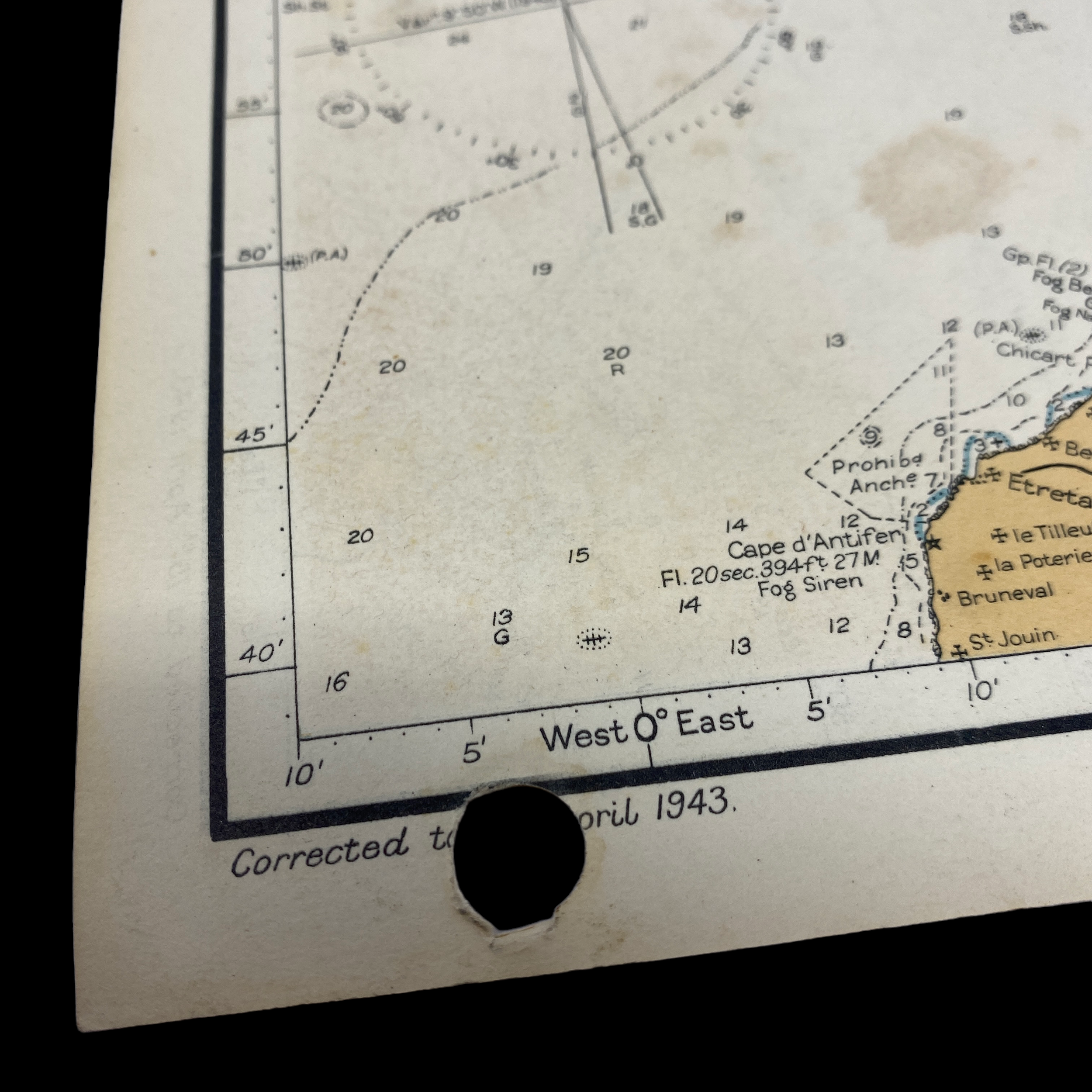

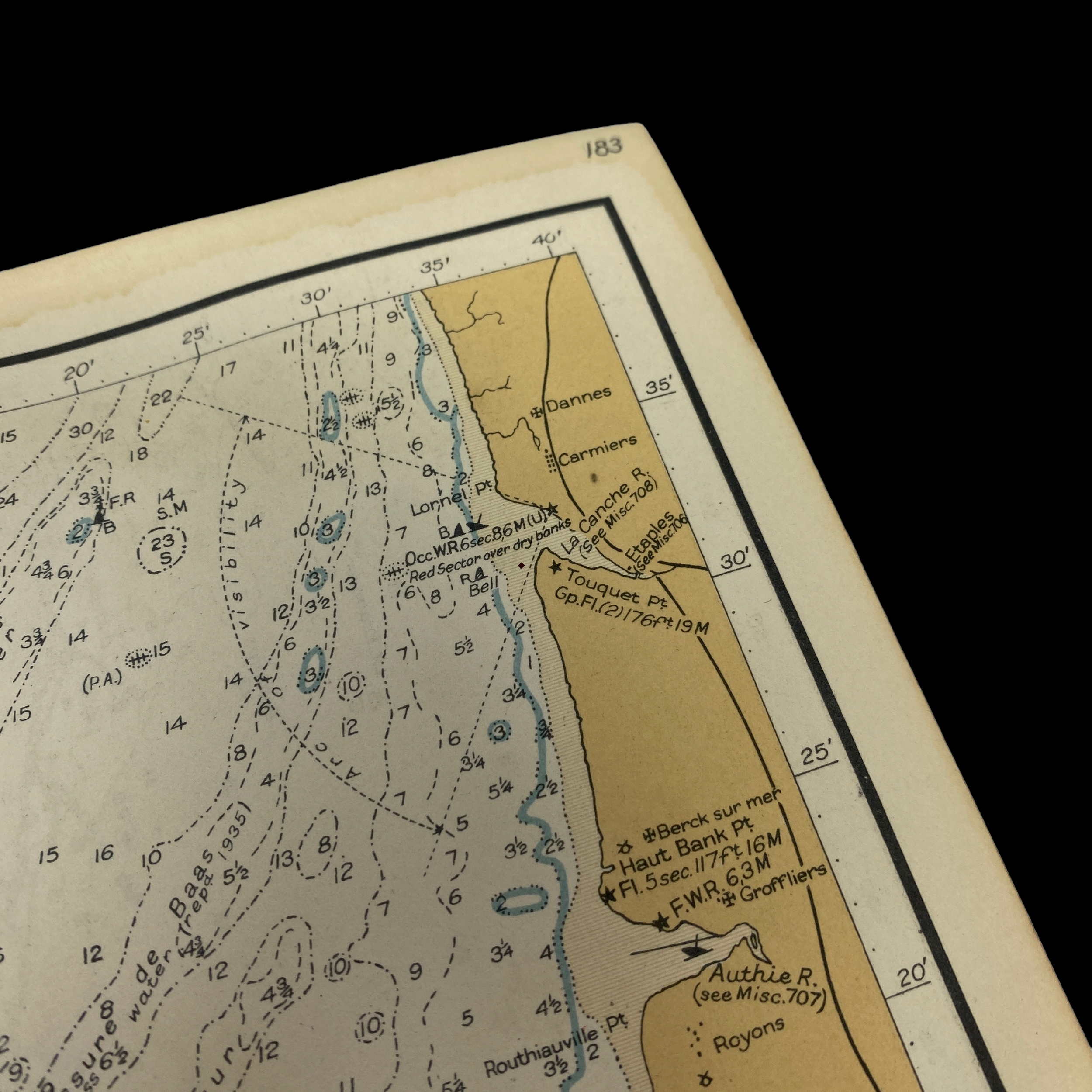

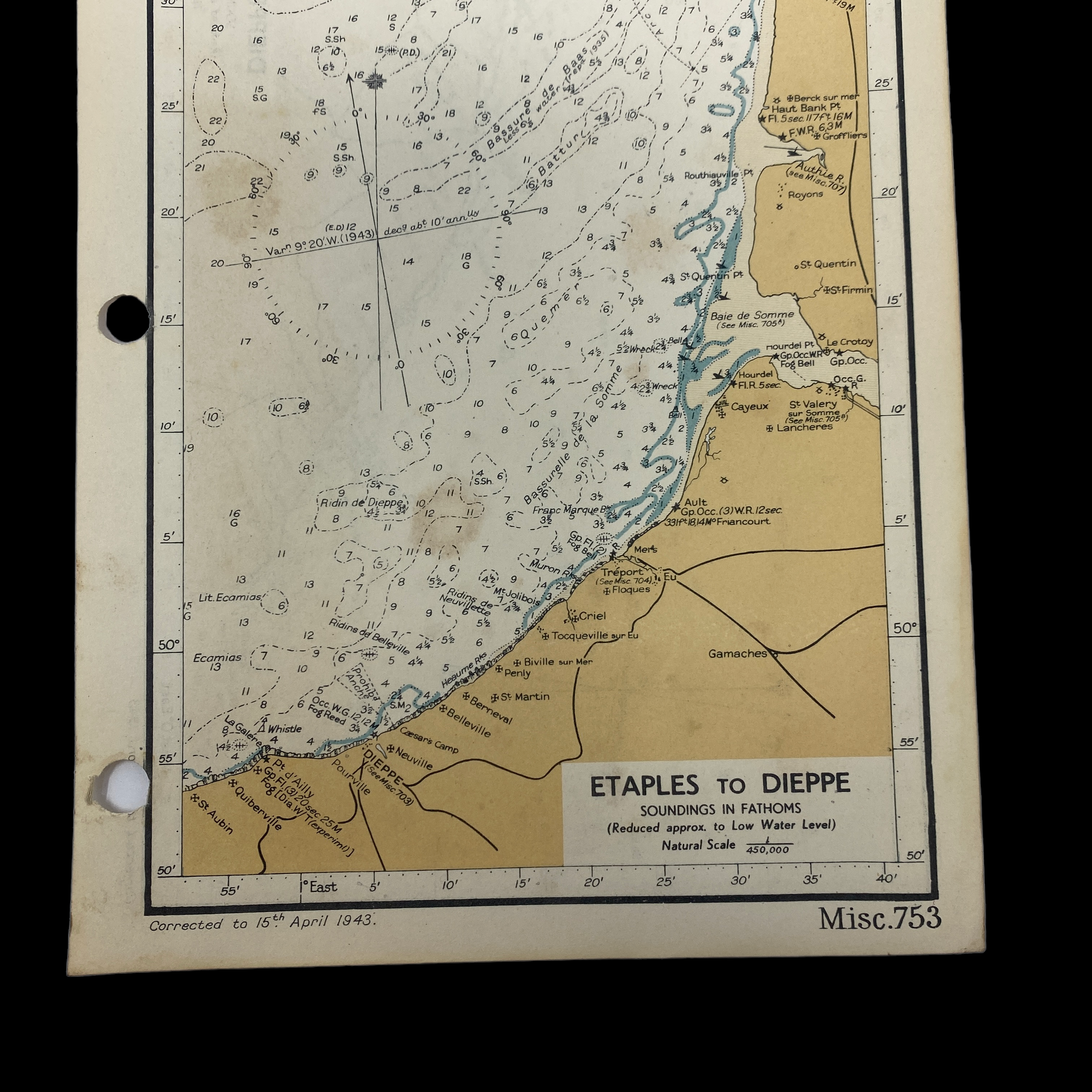
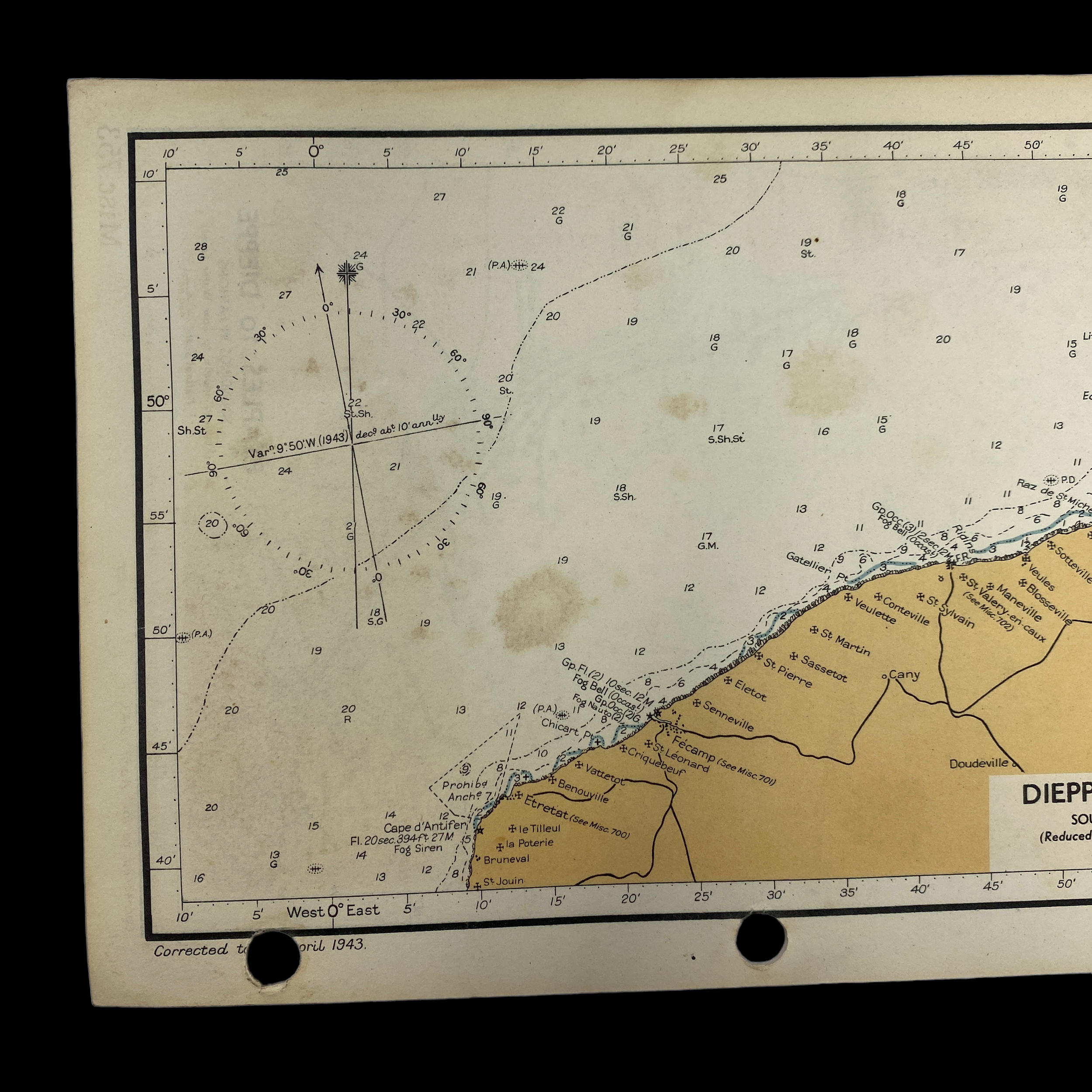
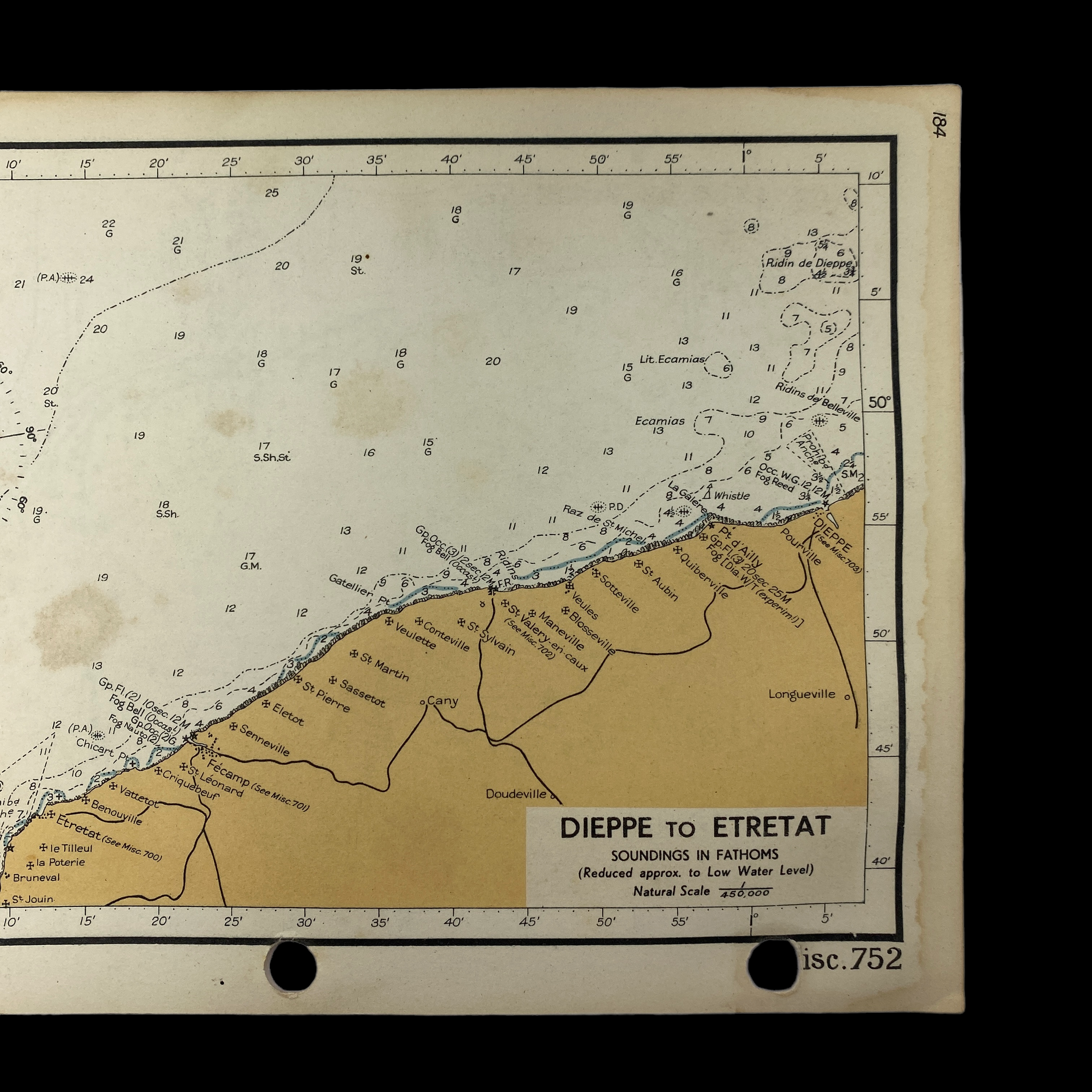
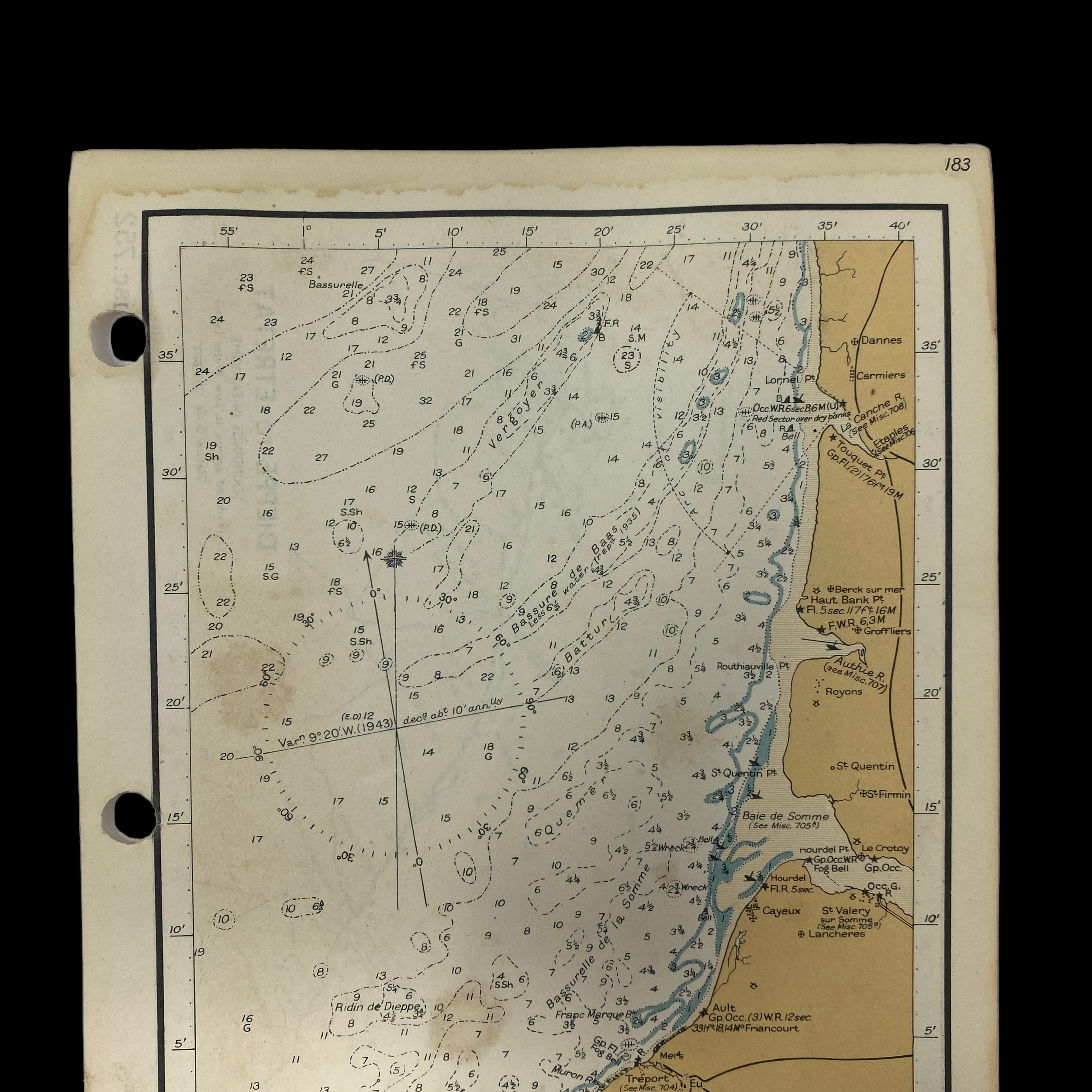


WWII 1944 Allied Operation Overlord Invasion of France Fathom Navy Map (Double-Sided)*
Comes with C.O.A.
This incredible and original WWII D-Day Operation Overlord chart was produced to aid in the Allied invasion of France. Because it was not known where the Allies would land during their D-Day amphibious assault, multiple fathom and invasion maps of the France coast were produced. This particular section of France was were the German’s believed the Allied forces would invade (instead of the actual landing point on D-Day of Normandy). This chart shows incredible detail and was used by Allied landing craft and other USN vessels.
Operation Overlord, also known as the Normandy landings, was a significant military operation during World War II that took place on June 6, 1944. The operation was the largest amphibious invasion in history, with over 156,000 Allied troops crossing the English Channel to land on the beaches of Normandy, France. The goal of Operation Overlord was to gain a foothold on the continent of Europe, break the German stranglehold on the Western Front, and ultimately defeat the Axis powers.
The planning for Operation Overlord began in 1942, with the Allies determining that the best strategy for success was a massive amphibious assault. The operation was led by General Dwight D. Eisenhower, with General Bernard Montgomery serving as the ground commander. The Allies spent months gathering intelligence and developing a detailed plan for the invasion, which involved landing on five separate beaches in Normandy: Utah, Omaha, Gold, Juno, and Sword.
The Normandy landings marked the beginning of the end of the war in Europe, as the Allies worked to push the German forces back and liberate the occupied countries. The operation was a significant success, with the Allies overcoming fierce resistance from the German military and establishing a solid beachhead on the continent. However, the operation also resulted in heavy casualties, with thousands of soldiers losing their lives in the initial assault.
The key to the success of Operation Overlord was the coordination of the various military branches, including the army, navy, and air force. The Allies used an extensive network of ships, aircraft, and vehicles to transport the troops and supplies across the English Channel, and the air force provided crucial support by bombing German positions and disrupting enemy communications. The navy also played a critical role in the operation, providing cover fire and transport for the soldiers as they landed on the beaches.
One of the most famous battles of Operation Overlord was the Battle of Omaha Beach, which took place on the morning of June 6, 1944. The American forces that landed on Omaha Beach faced intense resistance from the German military, and the initial assault was met with heavy casualties. Despite this, the American soldiers pressed forward, slowly pushing the German forces back and securing the beachhead.
In conclusion, Operation Overlord was a decisive moment in World War II, marking the beginning of the end of the war in Europe. The Normandy landings were a testament to the bravery and determination of the Allied soldiers, as well as the importance of coordination and cooperation between the various military branches. The sacrifices made on D-Day paved the way for the Allies to continue their push through Europe, ultimately leading to the defeat of the Axis powers and the end of the war.
Operation Overlord, the Allied invasion of occupied Europe during World War II, was one of the most complex military operations in history. The planning and preparation for Operation Overlord was a massive undertaking, shrouded in secrecy to prevent the enemy from discovering the Allies' intentions. The success of the operation would hinge on the coordination of multiple military branches, intelligence agencies, and international allies. In this essay, we will explore the top-secret planning and preparations for Operation Overlord.
The first steps towards Operation Overlord began in 1942, when the Allies realized that the Axis powers were firmly entrenched in Europe and that a direct assault was necessary to defeat them. The British and American military leaders agreed on the need for a cross-Channel invasion and began to formulate a plan. The British Prime Minister, Winston Churchill, and President Franklin D. Roosevelt, agreed on the overall strategy, and a combined Anglo-American planning team was established to develop the details.
One of the biggest challenges facing the Allies was the need to maintain secrecy. The Germans had spies all over Europe, and the Allies had to ensure that the enemy was not aware of their plans. The planning team worked in strict secrecy, using code names for the operation and avoiding any mention of it in written communications. The Allies also set up a massive disinformation campaign to mislead the Germans, planting false information to suggest that the invasion would occur elsewhere, such as the Balkans or Norway.
The Allies also had to coordinate the activities of multiple military branches and intelligence agencies. The British and American navies were tasked with transporting and supporting the troops, while the air forces were responsible for providing air cover and bombing targets in support of the ground troops. The intelligence agencies were responsible for gathering information about enemy defenses and helping to direct the air and naval attacks. All of these elements had to work together seamlessly to ensure the success of the operation.
One of the key components of the operation was the buildup of troops and supplies in England. The Allies needed to assemble a massive invasion force, which required a massive logistical effort. The Allies had to build new ports and transport networks to handle the influx of troops and supplies. They also had to train and equip the soldiers, who would be facing heavily fortified enemy defenses. The Allies also had to ensure that they had enough landing craft and ships to transport the troops across the Channel.
Another critical aspect of the operation was the deception plan. The Allies needed to convince the Germans that the invasion was going to occur elsewhere, and they did this through a combination of disinformation and physical decoys. The Allies set up dummy landing craft, tanks, and aircraft to suggest that the invasion was going to occur in a different location. They also spread false information through double agents and other means to mislead the Germans.
The final stage of the preparations was the rehearsal of the operation. The Allies conducted a series of training exercises and mock invasions to ensure that everything was in place for the real operation. They also conducted reconnaissance missions to gather intelligence about the enemy defenses and to refine the plan. The final rehearsal was a full-scale mock invasion, which was used to test the coordination and effectiveness of the various military branches and intelligence agencies.
In conclusion, the planning and preparation for Operation Overlord was a massive and complex undertaking that required the coordination of multiple military branches, intelligence agencies, and international allies. The success of the operation would hinge on the ability of the Allies to maintain secrecy, coordinate their efforts, and deceive the enemy. Despite the many challenges, the Allies were able to successfully launch Operation Overlord on June 6, 1944, and the invasion of Europe marked a turning point in the war.